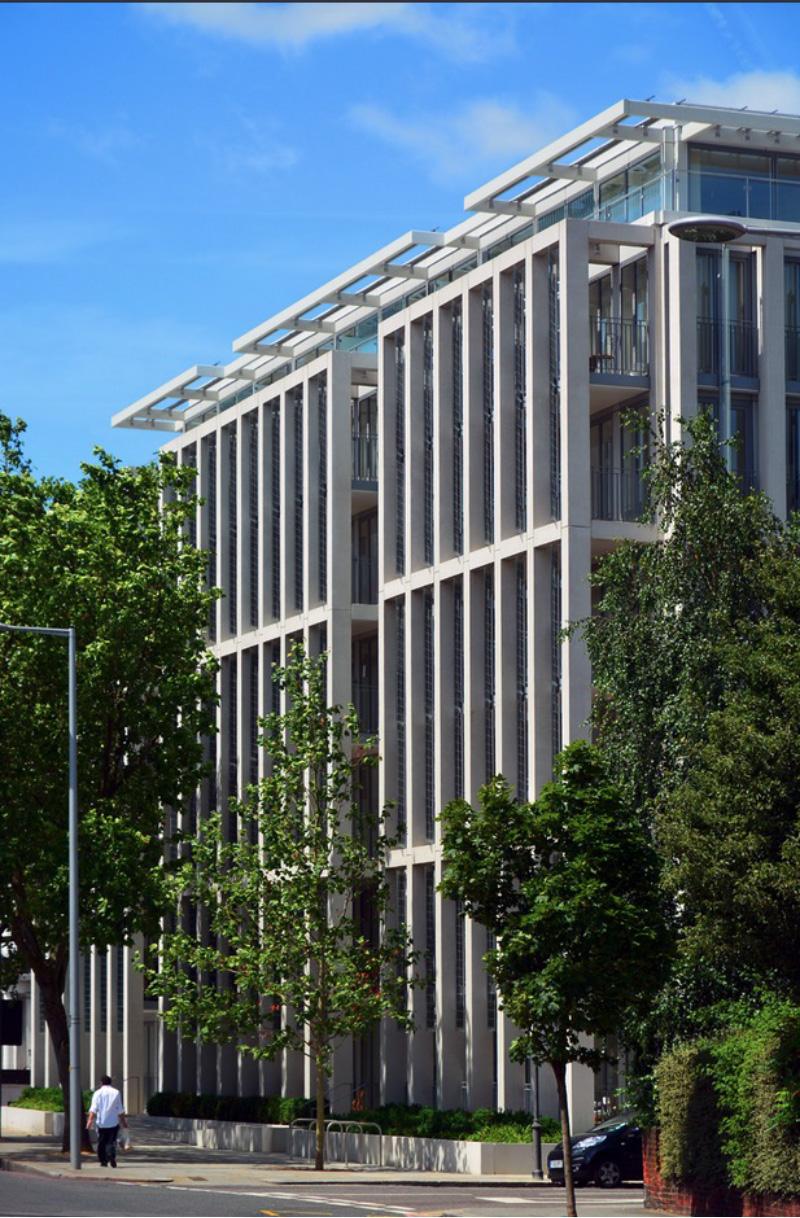Architect - The development of mass timber - by Thomas House

We appreciate what the design community is trying to say when they refer to embodied carbon.
Insofar as they are referring to buildings reliant primarily on concrete and steel, which mostly involve disembodied carbon lost to the atmosphere in the high-energy manufacture of metals, or when stone is broken or crushed.
The carbon sink available at low energy expense is wood.
And as climate change presents humanity an existential threat that will soon cross - or may have already crossed - a criticality threshold, it is vital that we feed its voracious furnace any more of its desired fuel, carbon.
One of the most dramatic developments is the development of mass timber - structural components made entirely of cross-laminated wood. We are referring to columns made of wood in projects that have reached 18 stories (Norway), soon to be eclipsed in Milwaukee by a 22-story structure slated to open in August.

Fire Away
The question mark in your thought bubble we’ve anticipated: what about fire resistance.
Mass timber, often referred to as CLT (cross laminated timber), meets ANSI. APA PRG 320 and 2015 IBC and are designated code compliant. All are over-specified to create char tolerance, and the minimum depth five-ply wall panels survived a three-hour 1800F burn – far in excess of the two-hour requirement.
Exposed mass timber is designed to char on the outside, which forms an insulating thermal barrier that protects the interior wood from damage. Chamfered corners provide initial flame resistance, protecting the structural core.
When clad with gypsum wall board, the mass timber remains damage free even in a contents-fire burnout.
Carbon regained
According to the Journal of Sustainable Forestry, mass timber would reduce the carbon cost by 15 to 20% over steel, assuming sustainably managed sources.
At today’s incubator-level demand, the known sustainable sources of wood such as British Columbia, Austria, and Maine can meet the need. Wide acceptance would put a high level of stress on woodlands, requiring a 40% increase in forest growth.
Clearly full-scale deployment of mass timber will require the logging industry to begin planning now for what would happen later. Trees, after all, are in themselves essential to removing carbon from the air and trapping it - which is what makes them an example of extravagantly embodied carbon.
Construction requires a much smaller workforce, 25%, with an almost 90% reduction of construction-related, carbon-belching traffic.
Who’s crazy enough to do this?
Buildings of mass timber exceeding typically-permitted five or six-story use, for example the 22-story Ascent project in Milwaukee, require zoning and other code variances.
Developer New Land Enterprises spent several years refining the project, guiding it through approvals, tests, and changes (increasing by two floors) before getting the go-ahead. The 17 stories above its eight-story concrete parking garage will be supported entirely by mass timber.
But they are not alone.
Horden Cherry Lee Architects 2014. Seven story residential building constructed using cross-laminated timber (CLT) as an alternative to steel or concrete. King’s Rd., Royal Borough of Kensington & Chelsea, London.
Here in the U.S., Walmart has invested in the industry - purchasing StructureLam and opening an Arkansas production facility. One of their projects will be a 2.4 million s/f mass timber headquarters in Bentonville.
Much, much closer to home
The BSA has founded the Boston Mass Timber Accelerator to “engage local communities and stakeholders and provide multiple visibility platforms for best practice discussions, product presentations, study reports, and summary findings.”
Moreover, the Accelerator will select and provide funding to 10 privately funded active projects. (The Accelerator names the US Forest Service, the Softwood Lumber Board, Think Wood, WoodWorks Product Council, the ClimateWorks Foundation, and the Boston Planning and Development Agency as its partners.) More information at https://www.architects.org/mass-timber-accelerator.
TS Eliot wrote “the way forward is the way back.” And going back to wood looks like a way, if not the way, forward.
Thomas House, AIA, is the principal of THA Architects, Stratham, N.H.
PROCON and Hitchiner break ground on 57,000 s/f shared services operations facility








.png)